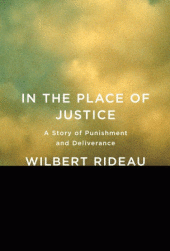 (AP) -- "In the Place of Justice: A Story of Punishment and Deliverance" (Alfred Knopf, 368 pages, $26.95), by Wilbert Rideau: Wilbert Rideau, who went to prison as a terrified 19-year-old and emerged 44 years later as an award-winning journalist, has written "In the Place of Justice: A Story of Punishment and Deliverance," an account of the time he spent in prison and the crime that sent him there.
(AP) -- "In the Place of Justice: A Story of Punishment and Deliverance" (Alfred Knopf, 368 pages, $26.95), by Wilbert Rideau: Wilbert Rideau, who went to prison as a terrified 19-year-old and emerged 44 years later as an award-winning journalist, has written "In the Place of Justice: A Story of Punishment and Deliverance," an account of the time he spent in prison and the crime that sent him there.
Rideau tells his story in riveting detail, beginning with how he grew up a poor black kid in heavily segregated Lake Charles, La.
He writes about the crime that landed him on death row at Angola, Louisiana's penitentiary, then known as the bloodiest prison in the nation: It was an ill-conceived bank robbery hatched by a naive kid who planned to finish in time to meet his ride home so he wouldn't have to face the danger of waiting for the bus in the white part of town.
Rideau also makes a convincing argument that he was kept in prison far longer than anyone else convicted of murder in 1961 because he is a black man who killed a White woman -- bank teller Julia Ferguson.
The amazing part of Rideau's story, however, is his transformation from an uneducated, prejudiced teen to a thoughtful, well-read adult who became so well-respected by prison wardens that they began calling on him for help and advice.
Rideau became editor of The Angolite. He writes of his goal to make the magazine a truly independent journal of prison life. Several wardens supported the effort, especially C. Paul Phelps. Rideau became close to Phelps, and dedicated his book to him.
The Angolite won several national prizes, including a George Polk Award and a Robert F. Kennedy Journalism Award.
Rideau has surprisingly kind words for Angola's wardens, except for Burl Cain, the present warden. Among other things, he accuses Cain of undermining the independence of The Angolite and of keeping awards Rideau had won for his work on several video projects.
Rideau's death sentence was commuted to life in prison after the U.S. Supreme Court outlawed the then-existing death penalty in 1972. He was found guilty of murder twice more, but was finally freed in 2005 after a manslaughter conviction, for which he was sentenced to 21 years. This allowed him to be freed for time served, after 44 years behind bars.
The picture of prison life painted by Rideau isn't the one portrayed in many movies. There is violence and brutality, especially for the weak, who become slaves of powerful prisoners, providing sex and other services, he writes. But Rideau mostly shows that prison is a place where people are still living their lives and violence, for the most part, is targeted.
Not that Rideau -- and most of his fellow prisoners -- were without knives. The logic, which he argues is sound, was that it was better to be caught by the guards with a knife than by your enemies without one.
Amazingly, after the fear, the periods of isolation and the hate he experienced, Rideau was able to lead a productive life and help others.
Now he has provided a wonderful chance to share his remarkable life.














































































































































































































































































































